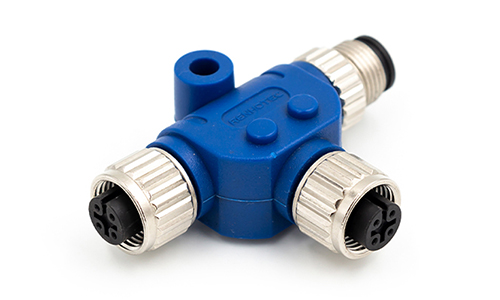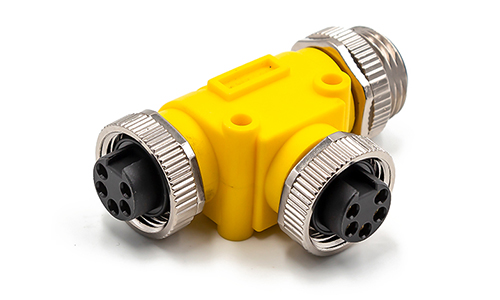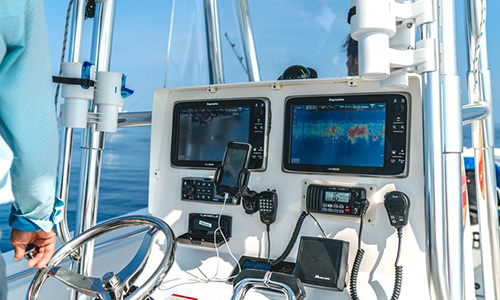Choosing the right NMEA 2000 connector requires consideration of various factors to ensure compatibility, reliability and ease of use. Below is a guide to help you make your decision.
Understanding NMEA 2000 Basics is the first step. NMEA 2000 is a communication protocol used to connect marine sensors and display units within ships and boats. It uses a CAN (Controller Area Network) bus and operates at 250 kbps. NMEA 2000 networks use a backbone and drop cable structure, with T-connectors for adding devices.
There are two main types of NMEA 2000 connectors: Micro Connectors and Mini Connectors. Micro Connectors are smaller and suitable for small to medium-sized boats and low-power devices, making them ideal for connecting GPS and sensors on small sailboats and fishing boats. Mini Connectors are larger, suitable for larger boats and commercial vessels, capable of handling higher current loads, and are more robust, making them ideal for engine monitoring systems on large yachts and commercial ships.

Micro Connectors (M Series)

Mini Connectors (7/8″ Series)
Roles of NMEA 2000 Connectors:
- Monitoring and Control: Using Mini Connectors, you can monitor engine performance, fuel levels, and other vital systems, and control autopilots, lighting, and other onboard systems from a central location.
- Data Sharing and Logging: NMEA 2000 connectors allow for collecting data from various sensors and logging it for analysis, enabling data sharing between devices, such as sending GPS data to chartplotters or radar systems.

- Navigation: NMEA 2000 connectors integrate multiple sensor data into navigation systems, enhancing navigation accuracy and safety, and display comprehensive navigational data on chartplotters.
- Safety and Alerts: High IP-rated connectors provide reliable connections in harsh marine environments, receiving alerts and warnings from connected devices about critical conditions such as low fuel, engine issues, or severe weather.
- Integration with Third-Party Software: NMEA 2000 connectors can interface with compatible software applications for remote monitoring and control using mobile devices and tablets.
- Scalability: NMEA 2000 networks allow for easily adding new devices and sensors to meet growing needs and technological advancements, ensuring compatibility with a wide range of marine equipment from different manufacturers.
Compatibility
When choosing NMEA 2000 connectors, compatibility is crucial. Ensure that the type of connector (Micro or Mini) is compatible with your existing network. Micro Connectors can seamlessly integrate into existing networks, and it is also important to verify that the connector supports the devices you intend to use.
Quality and Durability
Choose connectors made from high-quality, corrosion-resistant materials (e.g., gold-plated contacts, UV-resistant housings). Corrosion-resistant connectors are suitable for marine environments. Consider connectors with a high IP rating (e.g., IP67 or higher) to resist water and dust, providing better protection.
Installation and Maintenance
Opt for connectors that are easy to install with clear instructions and minimal need for special tools. For example, choose connectors that are easy to install and come with detailed user guides. Flexibility is also a consideration; T-connectors allow for easy addition of new devices to existing networks. Select connectors that are easy to inspect and clean, designed for long-term use and maintenance.
Power and Signal
Ensure that the connector can handle the current requirements of your devices. Mini Connectors are typically rated for higher currents and support high-current devices such as radar and large displays. Confirm that the connectors support standard 12V or 24V marine systems. Connectors compatible with both 12V and 24V systems are suitable for various marine electrical configurations.
Brand and Manufacturer
The choice of brand and manufacturer is also important. Opt for connectors from reputable manufacturers known for their quality and reliability. Consider connectors with good warranty and customer support. Choose connectors with a long warranty period to ensure user peace of mind. Ensure that the connectors comply with NMEA 2000 certification and other relevant marine standards to guarantee compatibility and performance.

Future-Proofing
Choose connectors that allow for easy network expansion and offer expansion interfaces for adding more devices in the future. Stay updated with new developments in NMEA 2000 technology to ensure compatibility with future devices and systems. Continuously update product lines to ensure that connectors remain compatible with the latest equipment.
Budget Considerations
While cheaper options might be appealing, investing in high-quality connectors can save on potential failure and maintenance costs. High-quality connectors, although more expensive initially, offer lower long-term costs and greater reliability. Consider the total cost of ownership, including installation, maintenance, and potential replacement costs. Durability and low maintenance needs contribute to a lower total cost of ownership.
Environmental Considerations
Choose connectors designed to withstand specific environmental conditions of your vessel (e.g., extreme temperatures, humidity, vibration). Opt for connectors that perform reliably in harsh marine environments. Whenever possible, consider eco-friendly options, such as connectors made from recyclable materials, and commit to using sustainable materials to minimize environmental impact.
Choosing the right NMEA 2000 connector requires careful evaluation of your specific needs, environmental conditions and forward thinking. By focusing on compatibility, quality, ease of installation and recognized brands, you can ensure a reliable and efficient marine network. For specific product recommendations or further assistance, please feel free to contact Renhotec!

